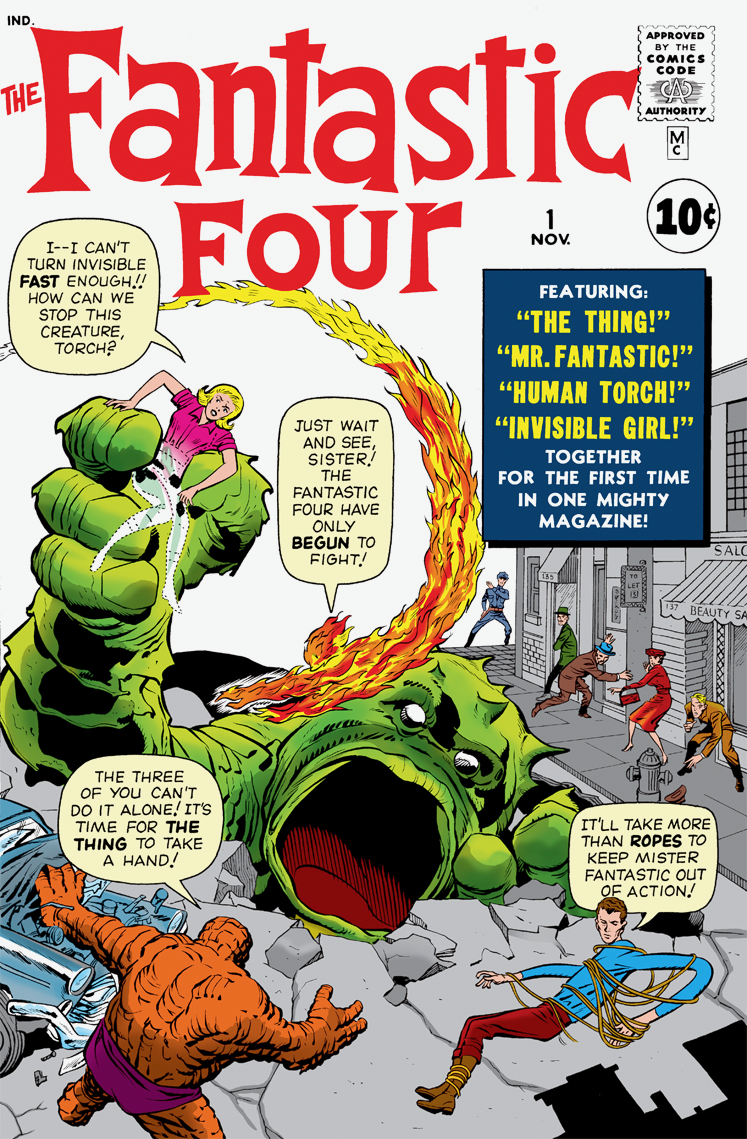
This is the one that started it all. And it’s one of the greatest comics of all time, even if the “World’s Greatest Comic Magazine” tag wouldn’t arrive until issue #4
Sure, there were Marvel Comics before it. There were even many, many Captain America comics before it. But this comic, where Stan Lee, Jack Kirby, and inker Dick Ayers teamed up for the first time, marks the start of the real Marvel Universe.
It’s got everything. Starting with the alliteration on the cover, and each character saying something–often to tell the reader who they are. Then we go right to the dramatic splash page…

…Which announces the name of the book again, and has a subtle innovation in the upper right corner: The names of the creators. One way Marvel differentiated itself from the Direct Competition was by making “stars” out its creators. It made readers feel like they were part of an in-crowd, like they knew the people involved. It created stronger personal investment.
Then the story jumps right in: No origin, no explanation of who these people are, just a display of their powers as the team assembles.



And we get our very first Trenchcoat Disguise. Check out the tag below. It’s a thing in Marvel (no pun intended), where heroes wear trenchcoats to “disguise” themselves.
And then finally, on page 10, we get a flashback origin sequence.
The story was simple: Reed Richards of Central City, later changed to New York City without comment, gets his buddy Ben Grimm (who is a pilot), his lover Susan Storm (who has some kind of scientific background), and her brother (inexplicably) to jump in a rocketship. During their flight, they hit a belt of cosmic rays that mutates them into the world’s first superhero family.
Everyone knows this origin story. But how many people recall that it’s Sue, not Reed, who gets Ben to go on that fateful trip that ended with him mutating into The Thing and blaming Reed forever…

Machismo and female provocation became a trope for Stan Lee. The “family” was another innovation: Emphasizing personality and relationships over action.
It’s not until page 17 that we finally see the monster from the cover, and get our big action sequence. The creature is Giganto, not to be confused with Giganto) bursting through the streets of Manhattan (on the cover).

The team tracks him to Monster Island.
The big bad is Mole Man. Mole Man knows karate, and Kirby knows how to draw it!
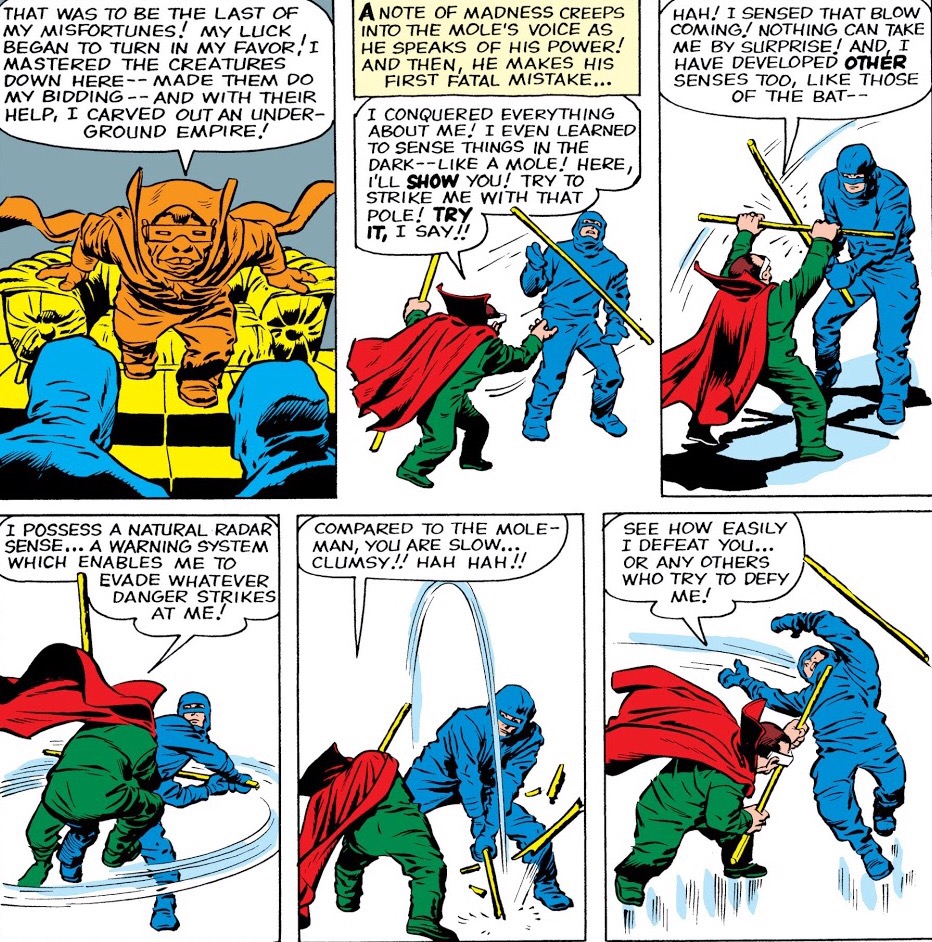
Mole Man was an explorer who discovered subterranean caves, which collapsed and “miraculously” turned him into a “human mole” that befriended and became the leader of giant, underground monsters. We don’t get his real name.
And, at the very end, the island blows up.

Oh, and Thing gets stuck in a hole.
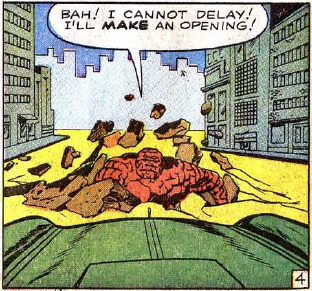
That will also be a running gag–see the tag below.
Yes, all that happens in a single issue. The first 100 issues of F4 are generally regarded as some of the best comic books of all time, and this is certainly one of the best comics ever created. For the full list of the top 100 Marvel single-issue stories, go here.
Also, there’s no mention of there having been other superheroes in the world before them. The concept of a “shared universe” is not yet born.
We also get the classic “hands-in” panel…
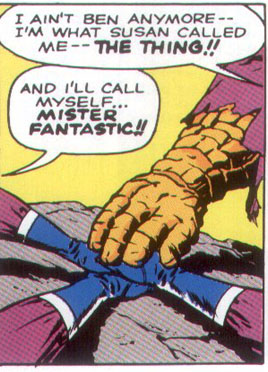
That gets riffed off of time and time again…
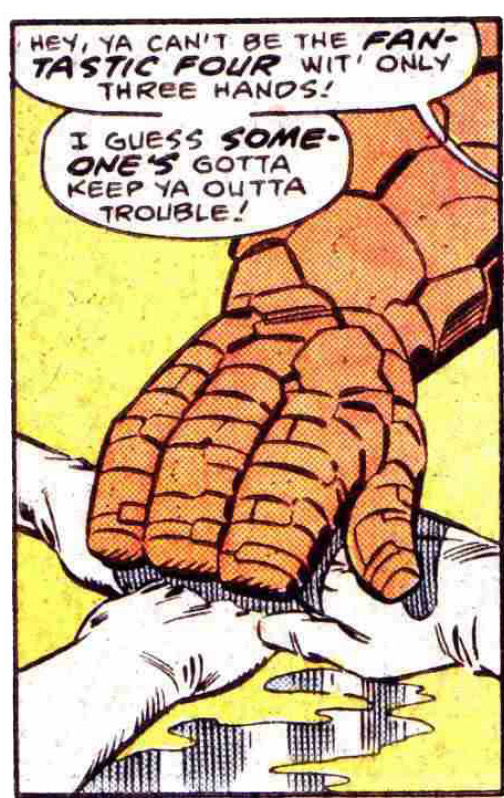
… Much like the cover to issue #1, which is legendary, and has tributed over and over.







